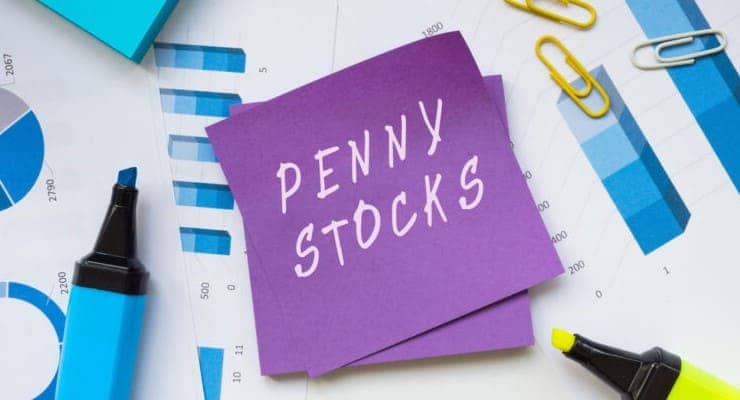
Best alternatives for Fixed deposit
Introduction
Seeking the best alternatives for Fixed deposit entails examining diverse investment avenues that provide potential returns, accounting for risk tolerance, liquidity requirements, and investment duration. Here are multiple options worth exploring:
1. Government and Corporate Bonds:
Government and corporate bonds are investment instruments representing loans made by investors to governments or corporations. Government bonds, typically considered low-risk, are issued by governments to finance public spending and come with fixed interest payments and repayment of the principal amount upon maturity. On the other hand, corporate bonds are issued by companies to raise capital and usually offer higher yields but carry higher risk compared to government bonds. Investors receive periodic interest payments and the principal amount at maturity. Both types provide fixed-income streams, allowing investors to diversify portfolios while assessing risk tolerance and desired returns.
Bonds provide fixed interest payments and repayment of the principal amount when they mature. They encompass different categories, such as government bonds, considered more secure, and corporate bonds, which might yield higher returns but come with elevated risk levels.
2. Treasury Securities:
Treasury securities refer to debt instruments issued by governments, typically the U.S. government, to fund expenditures. They include Treasury bills (T-bills), Treasury notes (T-notes), and Treasury bonds (T-bonds), each varying in maturity and interest payment structures. T-bills have shorter durations, usually less than a year, with no interest payments but are sold at a discount. T-notes and T-bonds have longer durations, ranging from 2 to 30 years, offering fixed interest payments every six months. They are considered low-risk investments due to government backing and serve as benchmarks for other interest rates, influencing financial markets globally.
Government-issued Treasury bills, notes, and bonds offer varying maturity periods, presenting a low-risk investment choice typically deemed secure because of government support.
3. Stock Market Investments:
Stock market investments involve purchasing ownership in publicly traded companies via stocks or shares. Investors aim to benefit from stock price appreciation and dividends. Stocks represent ownership stakes in companies, offering the potential for capital gains if their value increases. They also carry risks, as stock prices fluctuate due to market conditions, company performance, and economic factors. Different stocks, such as blue-chip, growth, or dividend-paying stocks, offer varying levels of risk and potential returns. Diversification across sectors and industries can mitigate risk in a stock portfolio, aligning with investors’ risk tolerance and long-term goals.
While investing in stocks offers increased returns, it also accompanies heightened risk levels. To balance this risk potential, diversification within a portfolio by including blue-chip, growth or dividend-yielding stocks can mitigate risk while aiming for potential gains.
4. Mutual Funds:
Mutual funds pool money from numerous investors to invest in diversified portfolios of stocks, bonds, or other assets. Managed by professional fund managers, they offer a convenient way for individuals to access diversified investment opportunities without directly managing assets. Investors purchase shares in the mutual fund, owning a portion of the overall portfolio. These funds come in various types, such as equity, bond, or balanced funds, catering to different risk appetites and financial goals. Mutual funds provide diversification, professional management, and liquidity, allowing investors to participate in the financial markets with varying investment amounts.
Pooling funds from numerous investors, mutual funds invest in diverse portfolios of stocks, bonds, and other assets, providing diversification and professional management services.
5. Exchange-Traded Funds (ETFs):
Exchange-traded funds (ETFs) are investment funds traded on stock exchanges, mirroring the performance of an underlying index, commodity, or asset basket. ETFs combine aspects of stocks and mutual funds, allowing investors to buy or sell shares throughout the trading day at market prices. They offer diversification across various sectors or asset classes, akin to mutual funds while providing flexibility and liquidity similar to individual stocks. ETFs track specific indices or markets, offering investors exposure to various assets, transparency in holdings, and lower expense ratios than some mutual funds.
Much like mutual funds, ETFs are exchange-traded and contain a mix of assets such as stocks, commodities, or bonds. They provide diversification and frequently boast lower fees compared to other investment options.
6. Real Estate Investment Trusts (REITs):
Real Estate Investment Trusts (REITs) are the best alternative for fixed deposit vehicles that enable individuals to invest in income-generating real estate properties without direct ownership. REITs own and manage a portfolio of properties, including residential, commercial, or industrial real estate. They generate income through property rentals, leases, or mortgages, distributing a significant portion of their profits as dividends to shareholders. Operating similarly to mutual funds, REITs offer investors the potential for regular income, portfolio diversification, and liquidity. They provide an accessible avenue for investing in real estate without the need for significant capital outlays typically associated with property ownership.
REITs allow investors to engage in real estate assets without direct ownership, generate revenue via property rentals or sales, and frequently distribute dividends to shareholders.
7. Peer-to-Peer Lending:
Peer-to-peer (P2P) lending involves individuals lending money directly to others without involving traditional financial institutions. Operating through online platforms, borrowers request loans, and investors fund them, earning returns through interest payments. P2P lending platforms facilitate diverse types of loans, such as personal, business, or student loans, offering attractive interest rates for investors compared to traditional savings or investment options. However, it comes with risks, including potential borrower defaults, requiring investors to diversify their investments across multiple loans to mitigate hazards. P2P lending offers an alternative investment avenue, enabling individuals to lend or borrow funds outside of conventional banking systems.
These platforms allow individuals to lend money to others, receive interest payments in return, and offer potentially higher returns. Still, they also carry elevated risk due to the possibility of defaults.
8. Gold and Precious Metals:
Gold and precious metals are tangible assets with inherent value, often used to hedge against economic uncertainties and inflation. Investors consider gold, silver, platinum, and palladium storehouses of value and diversification tools in investment portfolios. These metals hold intrinsic worth and historical significance, making them popular investment options. Investors can purchase physical bullion and certificates or invest in precious metal ETFs, gaining exposure to their price movements. While offering stability during market volatility, the value of these metals can fluctuate based on supply, demand, geopolitical factors, and currency movements, making them attractive yet volatile investment assets.
Investing in gold or other precious metals is a hedge against economic uncertainties or inflation, offering stability amidst market fluctuations. Gold, known for its lower volatility than stocks, provides a more stable investment option during uncertain economic conditions.
9. Cryptocurrencies:
Cryptocurrencies are digital or virtual currencies utilizing cryptography for secure transactions and functioning on decentralized networks based on blockchain technology. Bitcoin, Ethereum, and numerous altcoins are prominent cryptocurrencies. They enable peer-to-peer transactions without intermediaries like banks, allowing users to store, send, and receive funds globally. Cryptocurrencies use blockchain for transparency, recording transactions across a distributed ledger. While offering the potential for high returns and innovative technology, they are highly volatile and speculative, influenced by market sentiment and regulatory developments. While navigating this evolving and complex investment landscape, Investors face price fluctuations, security vulnerabilities, and regulatory uncertainties.
Bitcoin and Ethereum, among other cryptocurrencies, have surged in popularity as alternative investment avenues. While they present significant potential for high returns, they exhibit considerable volatility and entail elevated risk levels.
10. Annuities:
Annuities are financial products offering the best alternatives for fixed deposit on a stream of payments over a specified period, often used for retirement income planning. They involve individuals investing in a lump sum or making periodic payments to an insurance company in exchange for future payouts. Annuities come in various forms, including fixed, variable, or indexed, each with distinct features. Fixed annuities offer guaranteed payments, while variable annuities’ returns are linked to market performance. Indexed annuities combine aspects of both. They provide a way to receive regular income during retirement, but they often have fees, complex terms, and surrender charges, requiring careful consideration before purchasing.
Annuities are insurance products that provide regular payments over a specific period or for life. They offer guaranteed income but often have limited liquidity.
Conclusion:
Opting for the best alternatives for fixed deposits requires evaluating individual financial objectives, risk tolerance, and investment timeframe. Balancing risk and potential returns entails diversifying across varied asset classes. Comprehensive research, expert guidance, and comprehending the risks linked to each investment avenue are pivotal before making choices. Furthermore, regular portfolio reassessment based on evolving circumstances is vital to maximize returns and proficiently handle risk.
You May Also Like:
Related Posts

What Is Dogecoin? An Introduction To Dogecoinadmin . June 19, 2023

Best Canadian Artificial intelligence stocks under $1 2024admin . February 23, 2024

What is Blockchain? Easy Enlightenment of Blockchain for Dummiesadmin . June 21, 2022

Exploring the Best Cryptocurrency to Invest in Indiaadmin . June 12, 2023

Best Short-Term Investment Options: Maximizing Returns in a Limited Timeframeadmin . August 14, 2023

Top 12 Best Credit Cards For Free Airport Lounge Accessadmin . April 25, 2023

Top 12 Best Fuel Credit Cards in India 2023admin . April 25, 2023

Importance of Smart Investment Choices for Tradersadmin . August 14, 2023

Best Business Credit Cards Empowering Canadian Entrepreneursadmin . June 23, 2023
Latest Posts

Exploring the Best Cash Advance Apps of 2024 April 8, 2024

Top 34 Passive Income Ideas in 2024 March 19, 2024

Top 10 Penny Stocks to Buy Canada 2024 February 23, 2024

Best Canadian Artificial intelligence stocks under $1 2024 February 23, 2024

Top Artificial Intelligence Stocks Canada 2024 February 20, 2024

